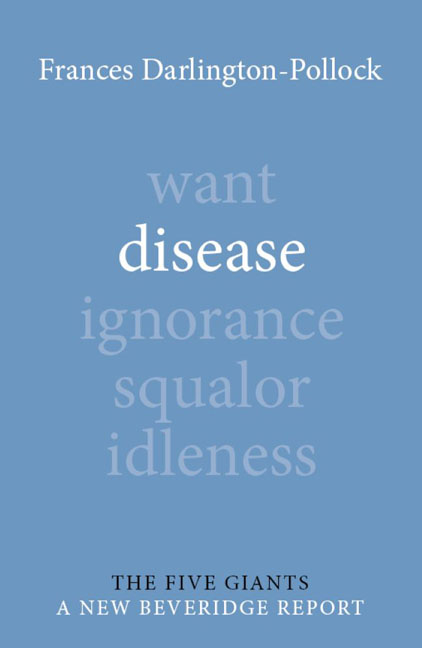Book contents
- Frontmatter
- Contents
- Acknowledgements
- 1 Introduction: A Revolutionary Moment
- 2 Disease: An Evolving Giant
- 3 Unequal Health and the Behemoth of Today
- 4 From Cradle …
- 5 … to Grave: The Problem of Age
- 6 Inequity and Inferiority: A Dismantled Health and Social Care Service
- 7 Continuing Challenges, Contemporary Crises
- 8 Shoring up “Assumption B”
- References
- Index
1 - Introduction: A Revolutionary Moment
Published online by Cambridge University Press: 20 January 2024
- Frontmatter
- Contents
- Acknowledgements
- 1 Introduction: A Revolutionary Moment
- 2 Disease: An Evolving Giant
- 3 Unequal Health and the Behemoth of Today
- 4 From Cradle …
- 5 … to Grave: The Problem of Age
- 6 Inequity and Inferiority: A Dismantled Health and Social Care Service
- 7 Continuing Challenges, Contemporary Crises
- 8 Shoring up “Assumption B”
- References
- Index
Summary
A revolutionary moment in the world's history is a time for revolution, not for patching.
Beveridge, Social Insurance and Allied Services
In 1969, Johan Galtung introduced the concept of “structural violence”. He urged that we consider how and in what ways violence could be construed as more than the physical act of harm from one body to another, and how the very society we inhabit acts to prevent people from realizing their full potential. In establishing this expanded concept of violence, Galtung offered a definition which is strikingly resonant today: “if a person died from tuberculosis in the eighteenth century it would be hard to conceive of this as violence since it might have been quite unavoidable, but if he dies from it today, despite all the medical resources in the world, then violence is present” (Galtung 1969: 168). What of today? December 2019 saw the emergence of a new, highly infectious disease targeting the lungs and other organs to devastating effect. Alarm grew in the scientific and medical community as to both its severity and transmissibility, with the rise of outbreaks in care homes and hospitals flagged to the UK government as early as January 2020 (Blanchard 2020). This failed to translate into political action. Two years into the pandemic and more than 150,000 people had died from Covid-19 in the UK alone. Many of these deaths were avoidable.
Ignoring warnings from officially appointed scientific experts, in the early days of the pandemic the UK government chose not to mandate testing older people for Covid-19 when discharged from hospital back into residential care. The consequences were severe: 40 per cent of the 48,213 people who died from Covid-19 in the first wave (mid-March to mid-June 2020) were care home residents (Scobie 2021). As late as 3 March 2020, Prime Minister Boris Johnson was boasting about shaking hands with “everybody” in a Covid-19-infected hospital (Weaver 2020). But as the pandemic unfolded, the rising rates of infection and mounting death toll forced action. Escalating messages to “shield”, avoid public transport and practice good hygiene and social distancing gave way to national lockdowns. However, preventative measures to halt the spread of the deadly virus all favoured the more privileged segments of society. A new hierarchy of employment emerged, with those occupations deemed as essential operating at the coalface of the pandemic and bearing the brunt of the risk.
- Type
- Chapter
- Information
- Disease , pp. 1 - 12Publisher: Agenda PublishingPrint publication year: 2022



